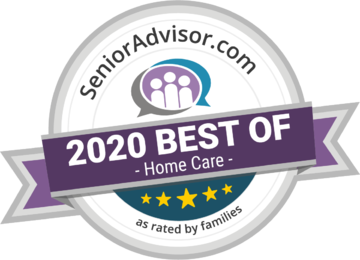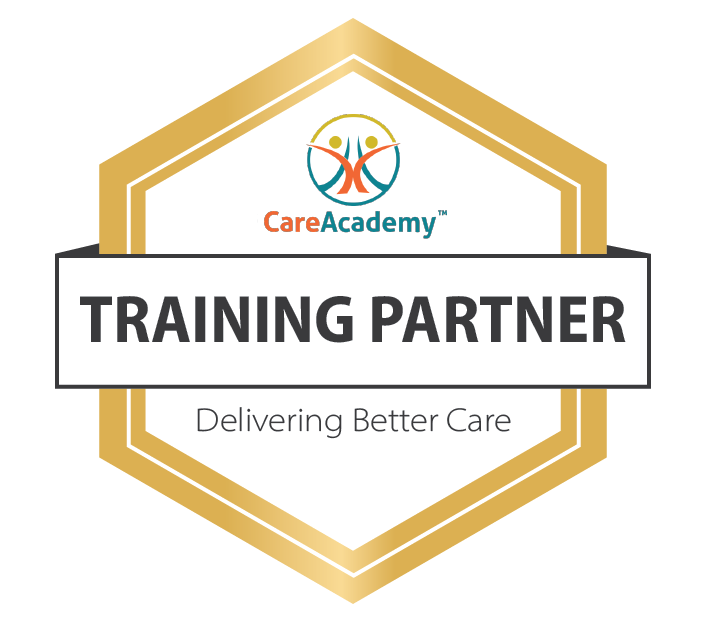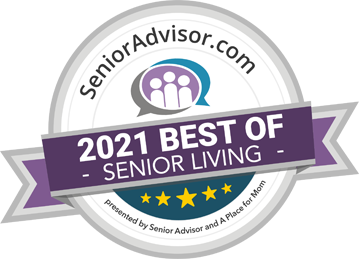I want to start off by introducing some of the statistics that come from NCO which is the national council on aging.
Chronic disease – So the statistic there is approximately 80% of older adults have at least one chronic disease and 77% have at least two, and there’s four chronic diseases that actually cause almost two thirds of all deaths each year with seniors. And that is heart disease, stroke, cancer and diabetes, and there are definitely a lot more contributing factors but that’s more so the overview statistic when it comes to chronic diseases.
Falls – Now every 11 seconds, an older adult is treated in the emergency room for a fall. Every 19 minutes an older adult dies from a fall. So as you can see, obviously falls are become a very critical issue when your parents or your loved ones do age, a lot of people don’t recognize the importance of fall prevention and fall safety. Now the nation actually spends $50 billion a year treating older adults because of the result of falling. Now that’s a pretty substantial amount. So obviously that’s something we really zero in on with Wellsprings when we’re putting together our care plans. Fall prevention is generally listed as one of the top three items that our caregivers are looking out for.
Mental health and substance abuse – So this is actually saying that one in four older adults experiences some sort of mental disorder. That can include anything like anxiety disorders, uh, dementia, memory loss, depression, and that number is actually expected to increase to 15 million by 2030. So obviously, with the baby boomer population increasing every year, that’s going to become more and more of a problem.
So those are just some quick overview statistics on some of the problems that seniors are facing. It gives us a little bit of insight into the different numbers and what sort of percentage effect it has on the population.
So now to jump into the actual problems facing the elderly in the U S we’ve went over the statistics. So the number one problem is going to be Costs and Financial security. So a lot of seniors, they didn’t plan ahead. The baby boomer population was a little bit different than it is now. Traditionally a lot of people didn’t have those big savings account. They weren’t looking towards retirement. People are living a lot longer nowadays so they don’t have the income to be able to sustain throughout the time while they’re aging. So contributing factors can be low savings. A lot of debt and obviously the increasing cost of healthcare that’s never going to stop going up.
We do actually have an e-book, it’s called Funding In-Home Care. So if you want to email us anytime or give us a call, we can definitely send that out. And that actually runs through all the different funding options for seniors. It’s everything from Medicare, Veterans Affairs, Reverse Mortgages – there’s a lot of information there on, some of the sources of funding in pending that a client cannot afford to private pay.
So another problem facing elderly is obviously Disease. We had touched base a little bit on chronic disease in our statistics. So that’s something we can’t really prevent completely, but we can reduce the chances by doing things like regular doctor’s visits and checkups, having a well-balanced diet and then also exercising on a daily or a weekly basis. Whatever it’s different for each person.
And the number three problem is Physical deterioration. Unfortunately we can’t get away from that as we age. I think we’re all aware of that. You have certain things like the loss of physical abilities, struggling with ambulation around the home and just any other physical activities. He may be used to play sports or go walking or hiking, biking, things like that that you’re not able to do anymore. So that really contributes to deterioration when we stopped doing those things. So some of the signs could be, a loss of walking speed, trouble going upstairs, things like that you used to be able to do on a daily basis that just become more difficult as time goes on.
So what a caregiver can come in and do is they can help out with ambulation with doing those exercises, helping out with the diet. There’s also a system of equipment that you can have to come in the house depending on the necessity. But there’s things like stair lifts, there’s Hoyer lifts, there’s all sorts of bathroom equipment there, shower chairs, there’s commodes that can go on the toilet. There’s a lot of different assistive out there that can help out given different situations.
And number four would be Mental health. We talked about that a little bit as well. The most common being Dementia or Alzheimer’, bipolar, anxiety, depression.
Number five would be Loneliness. Especially during this time of everybody being in quarantine, that’s limiting family members and friends going out to visit some of the seniors in the area. So some people that were already sort of on that, on the balance of being lonely or having a social life, they’re sort of catapulted into that loneliness phase, you know, being isolated. So, we’re doing a lot of things to help out with that. It kind of falls under the banner of telehealth, but we’re doing phone calls and video calls depending on the senior and their access to different technology. And we’re doing companionship just over phone and by video. So that’s been very helpful to some of our clients. And there’s a lot of social groups as well – when we’re not on quarantine, when everything goes back to normal, there’s a lot of social groups like the Downingtown area, senior center, the Westchester senior center. This is all a really great place for seniors to socialize and different activities. And also they serve meals there. It’s just a really great sort of a social group or gathering for any senior in anybody can join.
And the number six reason would be Financial Predators. So I think we’re all aware of what this is. You get a phone call and it turns out to be a scam. They’re looking for your credit card information and unfortunately, with seniors, they tend to be the more susceptible population to this. So that’s what scammers target. There’s different things like your phone scams, lottery scams, insurance scams, they’ll even call pretending to be a family member trying to ask for money, anything along those lines. So different things you can do to help out with that is just sort of keep your information overall. Just safe and secure. Have strong passwords on anything that you have financially. Don’t give out your credit card information, don’t give out any social security information. And another option would be to have someone manage your finances if maybe the senior is isn’t quite as sharp with the bookkeeping. And thing in the bill paying as they used to be. There’s some great options out there for managing those finances for them.
Number seven thing would be Abuse and Neglect. So different signs of abuse could be, if a family member in a different sign of abuse could be physical, it could be like a bruise or a burn or anything along those lines. But abuse can also be a main emotional, so it can actually lead to things like depression and just unusual behavior. You might come in the home and notice that somebody is acting a little bit differently. They’ve acted the same way for the last decade and all of a sudden, in the last few weeks they’ve been just acting a little bit off, a little bit strange. That’s a good indicator that there is something bothering them.
So in those cases, it’s recommended to contact adult protective services. Essentially what you would do is you would just go online, do a search for that. There’s different agencies in different areas. I know Chester County, the area of aging you can get in touch with and they’ll help out with that. The you can report into them and they’ll kind of take care of it from there.
And the number eight would be Transportation. So obviously as you get a little bit older, some people they’ll either lose their driver’s license or they don’t feel comfortable driving anymore. So that obviously really limits their mobility and where they can go and where they can visit. And even daily tasks like getting to appointments, picking up groceries, anything like that becomes a lot more difficult. And obviously it’s expensive if someone was taking Ubers all the time or a taxi, it can become very costly for them. So some of the other options would be, some of our caregivers will actually transport clients so they can come in their car and transport the client. It’s at a fairly small cost because the caregiver is there as well and can help out with mobility and things like that.
And one of the other services for transportation is Rover, which is a very, very cost effective service, which is a great option to have, but sometimes it can be a little bit lengthy because it’s like a bus. You stop and pick up other people. Sometimes you’re the last one to get off, sometimes you’re the first one. So it can be a pretty lengthy time if you’re not prepared for it but it is a great option to have.
And the last problem would be social climate. By that I mean technology. So obviously with things changing, everything’s done online, including a lot of health things now. There’s tele-health, just communication, everything you sign into your account with your doctor and everything’s all your billing and everything is online. You read test results. So that can be a little bit overwhelming for a senior, especially somebody who didn’t grow up in that sort of timeframe.
Some of the things that can really help out seniors, obviously depending on their access to technology, but the number one would be YouTube videos. There is now a YouTube video out there for everything. Before I started podcasting, I looked at YouTube videos on how to podcast. I mean you can find anything on there and it’ll show you a quick, usually a couple minute video on how to do things. So if you wanted to learn, how to check your email or how to jump onto Facebook and check out what your family and friends are doing, there is always a YouTube video to go along with that and provide some instruction. And another thing you can do is ask friends or family members for help. So if you have somebody and maybe a family member that comes over once a week or a couple times a week, they can definitely, especially if they’re a younger family member, they can usually always provide a little bit of guidance and a little bit of instruction, on using the different technology devices.
So in summary, those are some of the different problems and the statistics facing elderly in the U S and I hope that was very informative to some. If anybody wants to dig in and learn a little bit more, they can give us a call anytime at Wellsprings Home Care. Our office is 610-463-0880. And our main email line is info@wellspringshomecare.com. So that’s all I have today, thanks a lot for stopping by and we look forward to seeing you again soon. Thank you.



